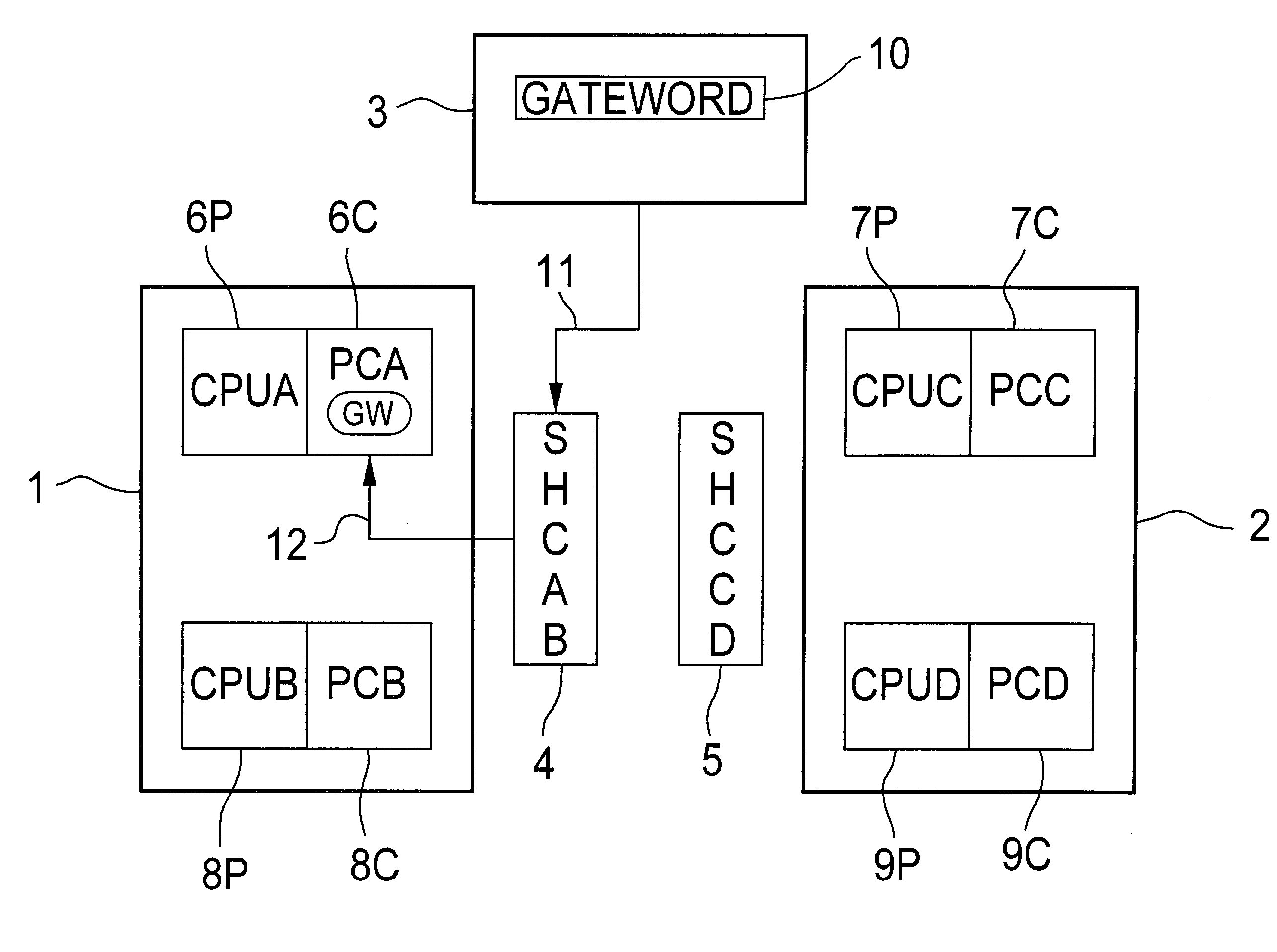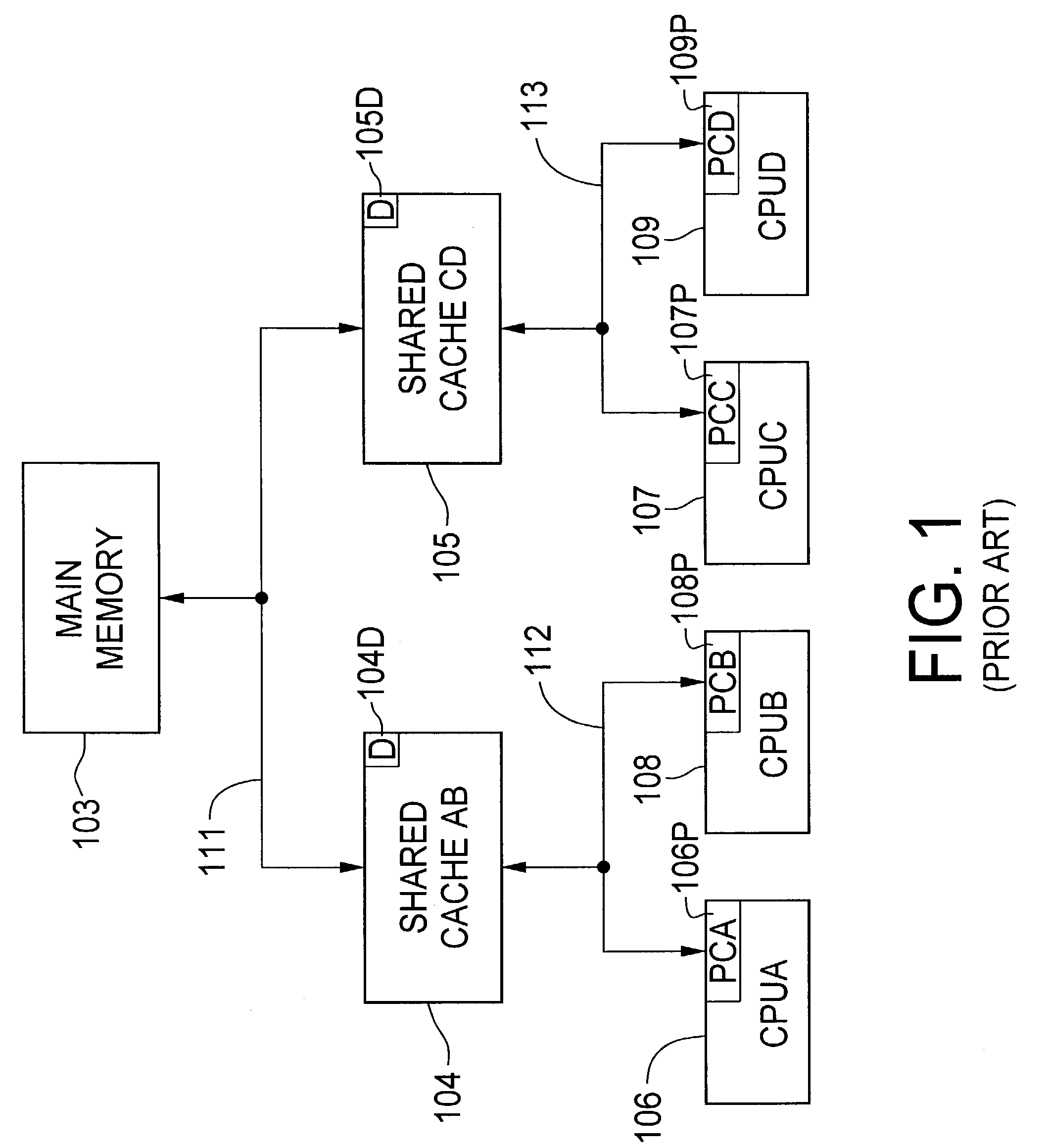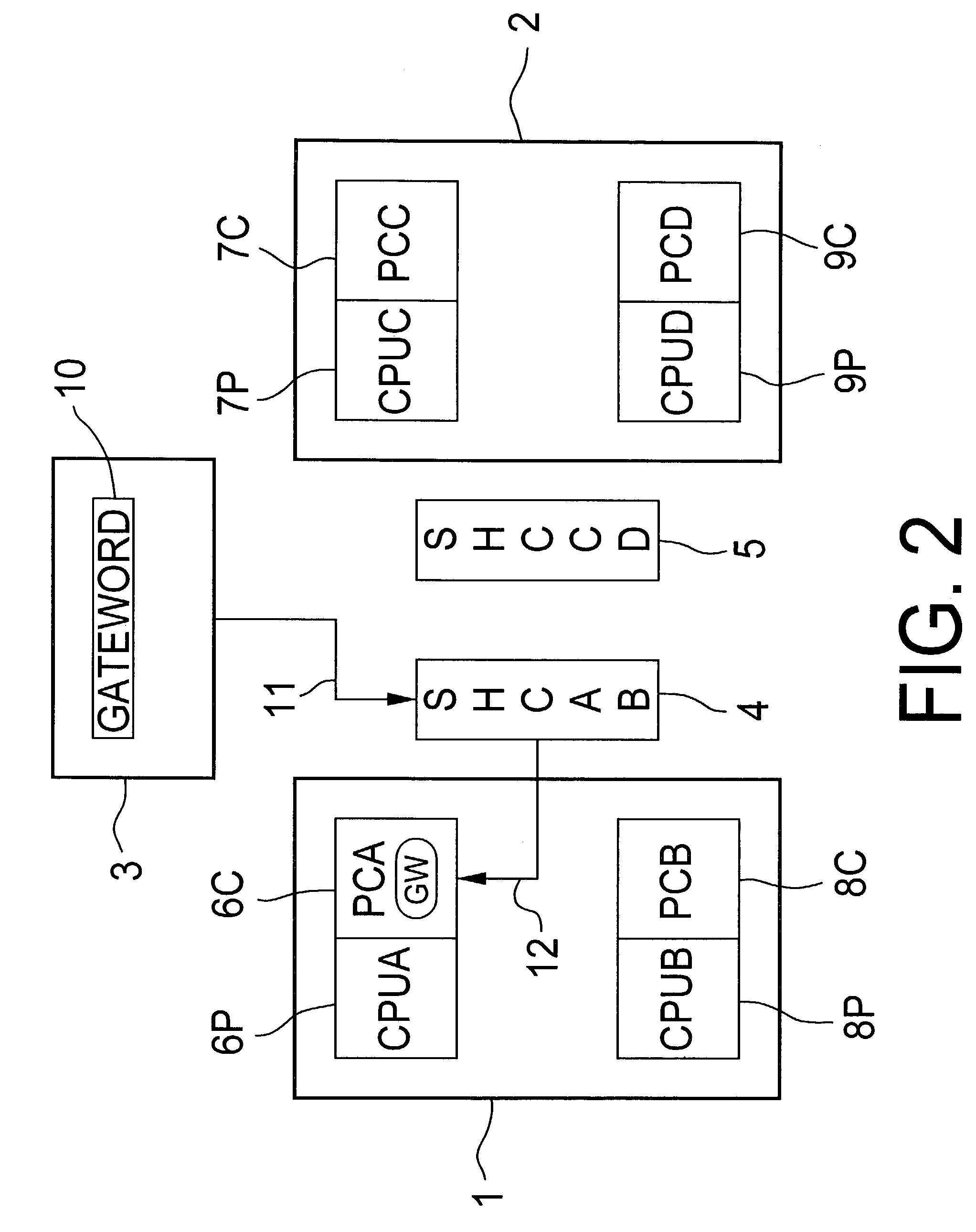Equal access to prevent gateword dominance in a multiprocessor write-into-cache environment
a write-in-to-cache environment and gateword technology, applied in the field of multiprocessing, can solve the problems of affecting the performance of the system, affecting the ability to handle the gateword access priority without a system performance penalty, and introducing significant delays in the siphoning process
- Summary
- Abstract
- Description
- Claims
- Application Information
AI Technical Summary
Benefits of technology
Problems solved by technology
Method used
Image
Examples
Embodiment Construction
)
[0028]Referring to FIGS. 2–4, the “hogging” problem is explained in detail. Two processor pairs 6P, 8P and 7P, 9P are respectively depicted on two circuit boards 1, 2 with first level private caches 6C, 8C, 7C, 9C. Second level shared caches (shared cache SHCAB 4 serving private caches PCA 6C, PCB 8C, and shared cache SHCCD 5 serving private caches PCC 7C, PCD 9C) are shown positioned between the boards 1, 2 to emphasize the delays inherent in a write-into-cache architecture. (In actual systems, a shared cache is typically disposed on the same board as the processor or processors it serves, and more than one processor may be disposed on the board and use the same shared cache. Further, in more dense circuit environments, several shared caches each serving one or more processors may be disposed on the same board.)
[0029]The term “write-into-cache” defines a caching process that saves time by avoiding the need to always send newly written data words to the main memory 3. In a write-in...
PUM
 Login to View More
Login to View More Abstract
Description
Claims
Application Information
 Login to View More
Login to View More - R&D
- Intellectual Property
- Life Sciences
- Materials
- Tech Scout
- Unparalleled Data Quality
- Higher Quality Content
- 60% Fewer Hallucinations
Browse by: Latest US Patents, China's latest patents, Technical Efficacy Thesaurus, Application Domain, Technology Topic, Popular Technical Reports.
© 2025 PatSnap. All rights reserved.Legal|Privacy policy|Modern Slavery Act Transparency Statement|Sitemap|About US| Contact US: help@patsnap.com



